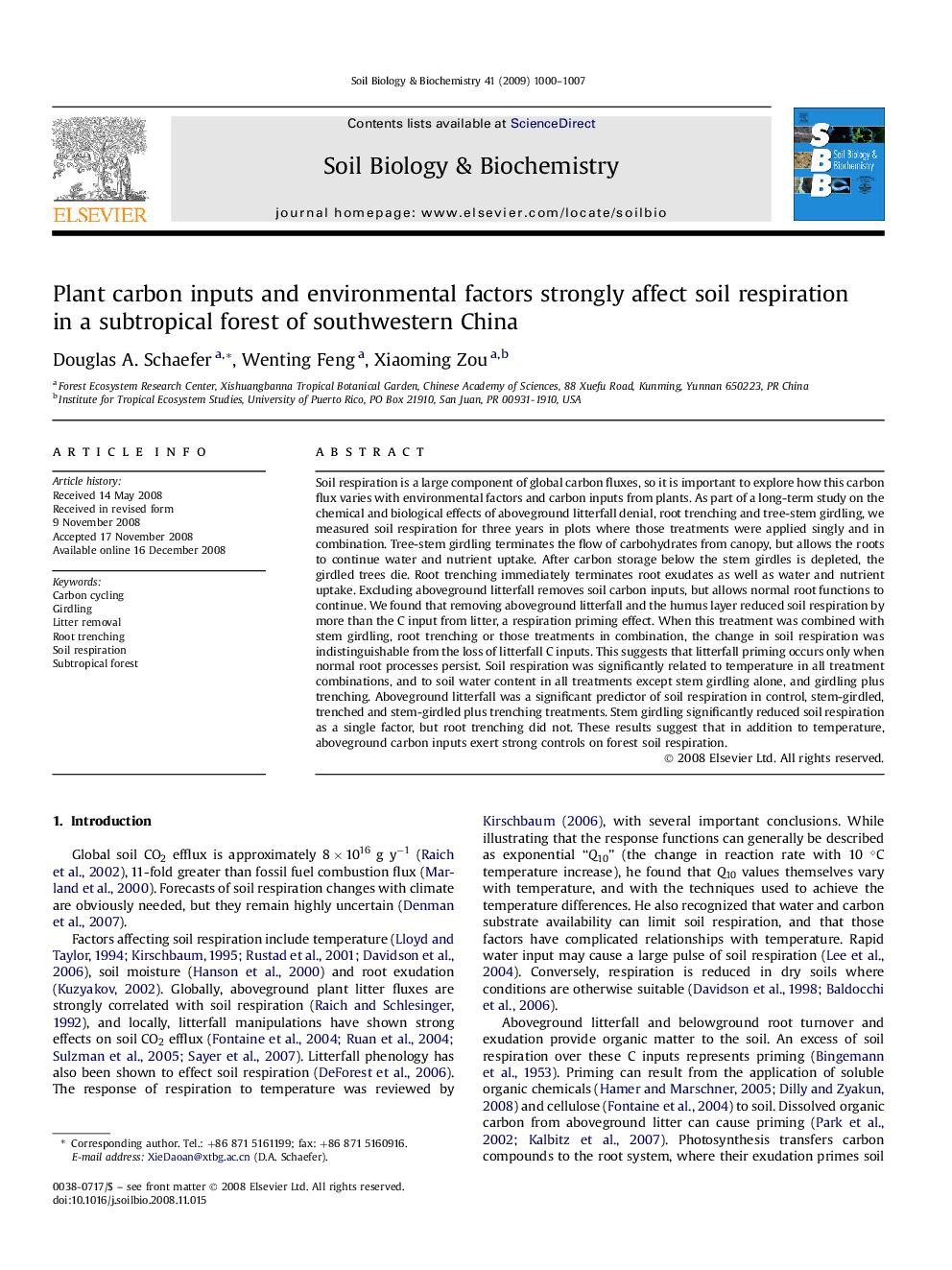| Article ID | Journal | Published Year | Pages | File Type |
|---|---|---|---|---|
| 2025765 | Soil Biology and Biochemistry | 2009 | 8 Pages |
Soil respiration is a large component of global carbon fluxes, so it is important to explore how this carbon flux varies with environmental factors and carbon inputs from plants. As part of a long-term study on the chemical and biological effects of aboveground litterfall denial, root trenching and tree-stem girdling, we measured soil respiration for three years in plots where those treatments were applied singly and in combination. Tree-stem girdling terminates the flow of carbohydrates from canopy, but allows the roots to continue water and nutrient uptake. After carbon storage below the stem girdles is depleted, the girdled trees die. Root trenching immediately terminates root exudates as well as water and nutrient uptake. Excluding aboveground litterfall removes soil carbon inputs, but allows normal root functions to continue. We found that removing aboveground litterfall and the humus layer reduced soil respiration by more than the C input from litter, a respiration priming effect. When this treatment was combined with stem girdling, root trenching or those treatments in combination, the change in soil respiration was indistinguishable from the loss of litterfall C inputs. This suggests that litterfall priming occurs only when normal root processes persist. Soil respiration was significantly related to temperature in all treatment combinations, and to soil water content in all treatments except stem girdling alone, and girdling plus trenching. Aboveground litterfall was a significant predictor of soil respiration in control, stem-girdled, trenched and stem-girdled plus trenching treatments. Stem girdling significantly reduced soil respiration as a single factor, but root trenching did not. These results suggest that in addition to temperature, aboveground carbon inputs exert strong controls on forest soil respiration.
